
You’ve worked hard. You’ve saved every penny. You finally found it – that perfect car, the one that promises freedom, reliability, and that undeniable new car smell. The gleam of the paint, the hum of the engine, the dream of countless trouble-free miles stretching ahead… pure automotive bliss, right? But what if that dream, that joy, that significant financial investment, crumbles into a relentless nightmare in just one short year?
Let’s face it, sometimes our cars let us down in the most spectacular ways. Vehicle manufacturers roll out cars that look promising on paper, with glossy advertisements and sleek designs, but often don’t live up to the hype. It can really sting after spending tens of thousands of dollars, or committing to a multi-year car loan, to develop a crushing case of buyer’s remorse. But trust us, it happens all too often, and you’re not alone in feeling that automotive heartbreak.
Considering how much new and used cars go for these days, you absolutely need to know what you’re getting into before you sign on the dotted line. Making a buying decision based only on the exterior aesthetics and a few shiny specs might just get you into a world of trouble. The good news? We can all learn from other vehicle owners’ mistakes, steering clear of the potholes and mechanical migraines that have plagued so many before us. So, buckle up, because we’re about to take a deep dive into the unfortunate realities of cars that promised the world but delivered nothing but regret.
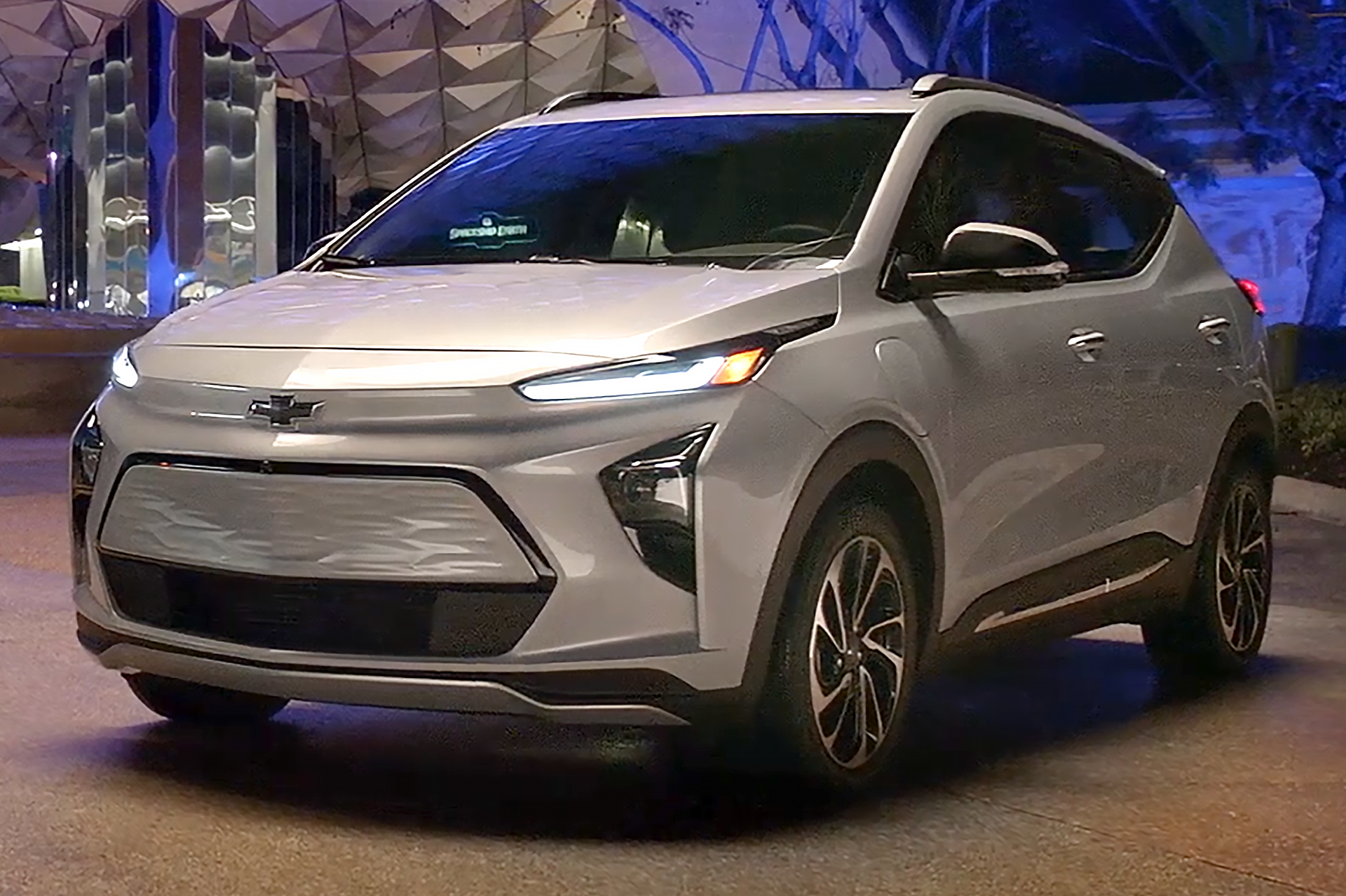
1. **Chevrolet Bolt**The Chevrolet Bolt arrived on the scene with a lot of buzz, especially for its admirable affordability and a respectable range that made electric vehicle ownership feel within reach for many. It was supposed to be GM’s mainstream EV hero, a beacon of eco-friendly, budget-conscious motoring. However, the Bolt has been plagued with problems that have cast a long, fiery shadow over its initial appeal, leaving a trail of disappointed owners in its wake.
The most infamous issue, without a doubt, has been the Bolt’s battery-related fires. This led to massive, high-profile recalls in both 2020 and 2021, forcing owners to grapple with the serious safety implications. The core of the problem stemmed from lithium-ion batteries made by LG, which had a nasty habit of short-circuiting, overheating, and, in worst-case scenarios, igniting into flames. It’s safe to say, no one buys a car expecting it to spontaneously combust in their driveway.
But even beyond the alarming battery woes, the Bolt still left much to be desired. Owners frequently noted that the ride quality was merely so-so, failing to impress on longer journeys or rougher roads. Space for rear passengers was often considered cramped, making family trips a less-than-ideal experience. And the handling? Well, that too often fell into the “adequate but uninspired” category. These cumulative shortcomings, overshadowed by severe safety concerns, definitely made many Bolt owners wish they’d parked their cash elsewhere.
Car Model Information: 2022 Chevrolet Bolt EUV FWD LT
Name: Chevrolet Bolt EV
Caption: 2022 Chevrolet Bolt EV
Manufacturer: General Motors
Production: unbulleted list
ModelYears: unbulleted list
Class: Subcompact car
BodyStyle: hatchback
Layout: Front-engine, front-wheel-drive layout
Predecessor: Chevrolet Spark EV
Categories: 2020s cars, All Wikipedia articles in need of updating, All articles containing potentially dated statements, All articles with unsourced statements, Articles containing potentially dated statements from February 2018
Summary: The Chevrolet Bolt EV (marketed in Europe as Opel Ampera-e) is a battery electric subcompact hatchback manufactured and marketed by General Motors under its Chevrolet brand from late 2016 until late 2023, with a brief hiatus between mid-2021 and early 2022.
The first-generation Bolt was developed and manufactured with LG Corporation. Sales of the 2017 Bolt began in California in December 2016; it was released nationwide and international markets release in 2017. A rebadged European variant was marketed as the Opel Ampera-e in mainland Europe. In 2017, the Bolt was the second-best-selling plug-in car in the United States. It was named the 2017 Motor Trend Car of the Year, the 2017 North American Car of the Year, an Automobile magazine 2017 All Star, and was listed in Time magazine’s Best 25 Inventions of 2016. The Ampera-e was discontinued after 2018. By the end of 2020, GM had sold 112,000 Bolt and Ampera-e cars worldwide. The first-generation Bolt had been subject to at least three recalls due to battery fire risks.
In mid-2023, GM officials said they would discontinue the Bolt; after outcry, they announced plans for a next-generation model, which is expected to be revealed in 2025 for model year 2026.
Get more information about: Chevrolet Bolt
Buying a high-performing used car >>>
Brand: Chevrolet Model: Bolt
Price: $23,294 Mileage: 30,332 mi.
Read more about: From Humble Beginnings to Electric Dreams: A Deep Dive into Elon Musk’s Electrifying and Eclectic Garage
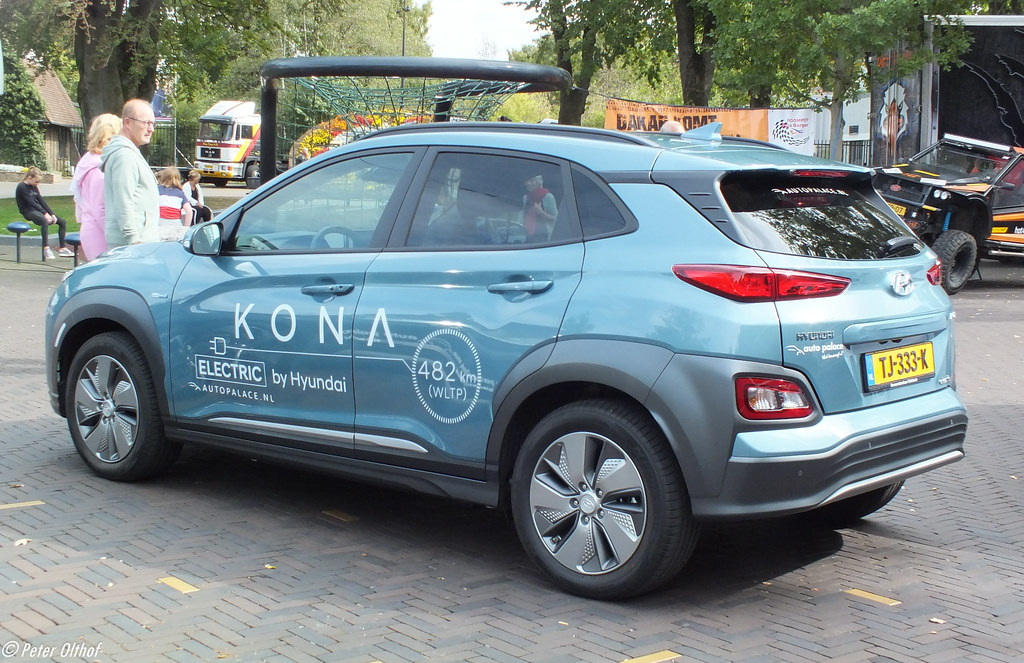
2. **Hyundai Kona Electric**Hyundai has been on an absolute roll recently, delivering some truly interesting and well-received electric vehicles that have captured the imagination of the public. Their innovative designs and competitive technology have made them strong contenders in the burgeoning EV market. However, even the best carmakers have their missteps, and Exhibit A for Hyundai’s occasional clunkers is undeniably the Kona Electric.
Much like its Chevrolet counterpart, the Hyundai Kona Electric found itself embroiled in a disheartening saga of battery fires and subsequent recalls. Hyundai had to issue a worldwide recall in 2020 and 2021, a costly and complicated effort aimed at nipping those fire risks in the bud by replacing battery packs in affected EVs. This kind of widespread safety concern is enough to shake anyone’s confidence in their new vehicle, turning excitement into anxiety.
Unfortunately, for many owners, the battery issues were just the tip of the iceberg, a grim indicator of deeper problems within the vehicle. While the context doesn’t dive into further specific mechanical issues for the Kona Electric, the sentiment of “Buyer beware!” attached to it strongly implies that its problems extended beyond just the battery. For those who jumped on the Kona Electric bandwagon, the journey often became less about efficient driving and more about frequent trips to the service center.
Car Model Information: 2019 Cadillac Escalade Platinum
Name: Hyundai Kona
Caption: Hyundai Kona N Line (SX2)
Manufacturer: Hyundai Motor Company
Aka: Hyundai Kauai (Portugal)
Production: 2017–present
ModelYears: 2018–present
Class: Subcompact crossover SUV
BodyStyle: SUV
Layout: ubl
Categories: 2020s cars, All-wheel-drive vehicles, All Wikipedia articles in need of updating, Articles containing Chinese-language text, Articles containing Korean-language text
Summary: The Hyundai Kona (Korean: 현대 코나) is a subcompact crossover SUV produced by the South Korean manufacturer Hyundai. The first-generation Kona debuted in June 2017 and the production version was revealed later that year. It is positioned between the Venue or Bayon and the Tucson in Hyundai crossover SUV line-up. The battery electric version called the Kona Electric (or Kona EV) was first launched in South Korea during the first half of 2018 and rolled out gradually worldwide afterwards.
Get more information about: Hyundai Kona
Buying a high-performing used car >>>
Brand: Hyundai Model: Kona Electric
Price: $37,811 Mileage: 84,091 mi.
Read more about: Buyer’s Remorse on Wheels: 9 Vehicles Owners Wish They Never Drove Off the Lot
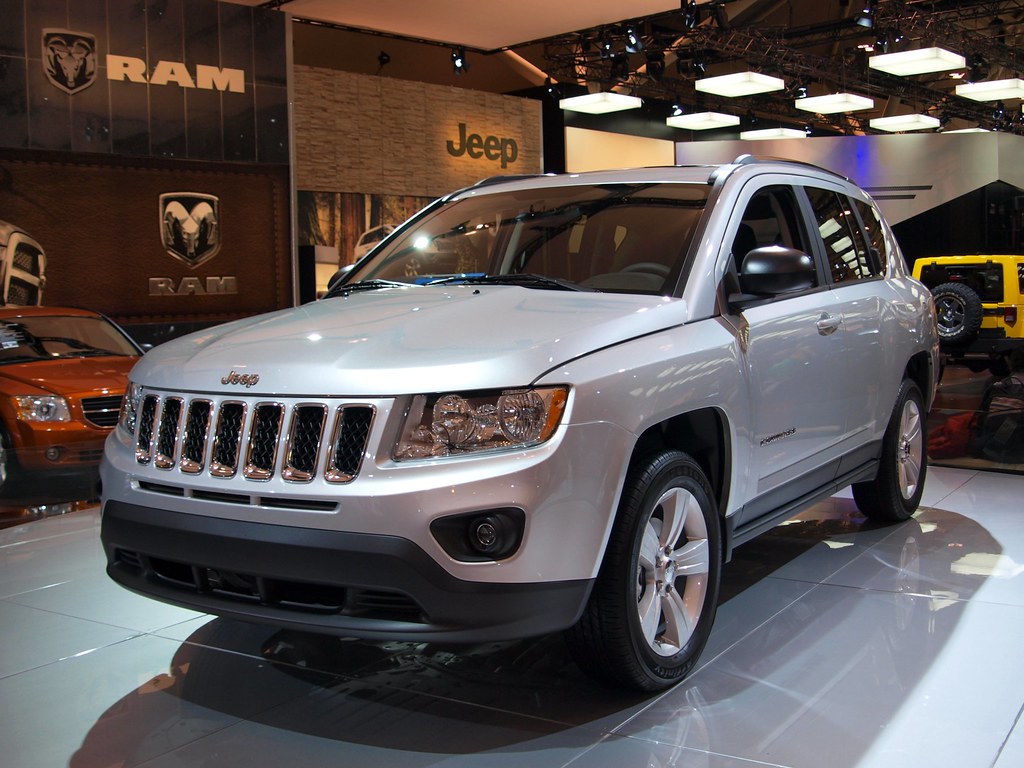
3. **Jeep Compass**Ah, the Jeep Compass. On the surface, it’s a compact SUV that promises the adventurous spirit of the Jeep brand in a more urban-friendly package. However, if you’re looking for a smooth, worry-free ride, you might want to steer clear, because this particular SUV has come with some serious, migraine-inducing issues across various model years. Many owners have found themselves trapped in a cycle of frustration, making it a prime candidate for our list of “un-purchasables.”
One of the most common and exasperating issues owners complain about centers around its transmissions. Both the continuously variable transmission (CVT) and the 9-speed automatic transmissions have been known to experience herky-jerky shifting, making for an uncomfortable and often unnerving driving experience. And that’s just the beginning, as these transmissions have also been known for catastrophic failure, leading to hefty repair bills and long stretches without a vehicle.
Beyond the transmission troubles, the Compass also suffers from poor engine performance, leaving drivers wanting more power and responsiveness. Excessive oil consumption is another frequent complaint, turning routine maintenance into a constant vigil over fluid levels. And as if that weren’t enough, electrical system issues rear their ugly heads, causing everything from minor annoyances to major operational failures. It seems the Compass often points its owners directly toward the repair shop.
Car Model Information: 2017 Jeep Wrangler Unlimited Sport
Name: Jeep Compass
Caption: 2019 Jeep Compass
Manufacturer: Jeep
Production: 2006–present
ModelYears: 2007–present
Class: Compact crossover SUV
BodyStyle: SUV
Layout: Front-engine, front-wheel-drive layout
Chassis: Unibody
Categories: 2010s cars, 2020s cars, All-wheel-drive vehicles, All Wikipedia articles written in American English, Articles with short description
Summary: The Jeep Compass is a compact crossover SUV, introduced in 2006 for the 2007 model year. The first generation Compass and Patriot, its rebadged variant, were among Jeep’s first crossover SUVs. The second-generation Compass debuted in September 2016 in Brazil and at the Los Angeles International Auto Show in November 2016, sharing a modified platform with the Renegade. It is positioned between the smaller Renegade and the larger Cherokee globally or the Commander in South America. The third-generation Compass debuted in May 2025, built on the STLA Medium by Stellantis, shared with other PSA Groupe vehicles.
Get more information about: Jeep Compass
Buying a high-performing used car >>>
Brand: Jeep Model: Compass
Price: $20,725 Mileage: 111,103 mi.
Read more about: Buyer’s Remorse on Wheels: 9 Vehicles Owners Wish They Never Drove Off the Lot
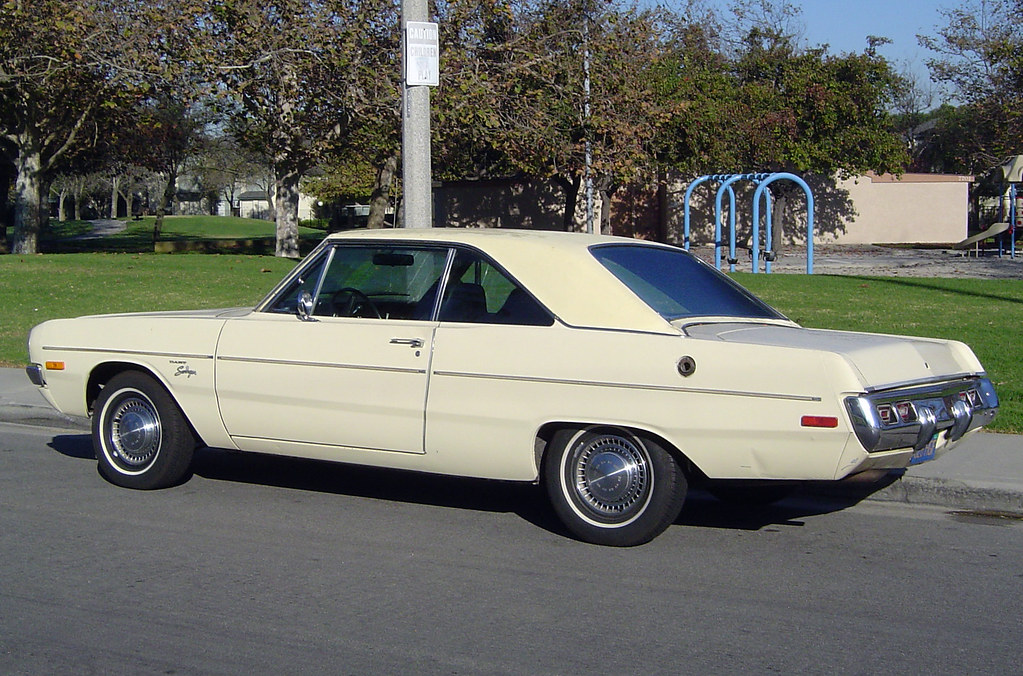
4. **Dodge Dart**The Dodge Dart, a compact sedan that unfortunately earned itself a reputation for having full-size car problems, often left owners wondering, “Where do we even begin?” This wasn’t just a car with a few quirks; it was a vehicle that seemed determined to test the patience and wallets of its owners from nearly every angle. For many who bought it, the Dart quickly transformed from a sensible purchase into a significant source of regret.
The complaints about the Dodge Dart were widespread and systemic, touching nearly every major component of the vehicle. Owners reported persistent issues with the transmission, making for an unreliable and unpleasant driving experience. Engine problems were also a common lament, often leading to performance issues and unexpected breakdowns. Even the suspension and brakes, critical for comfort and safety, added to the litany of complaints, painting a picture of a car that was simply not built to last.
The depth of buyer dissatisfaction with the Dodge Dart is quite telling. According to Consumer Reports, a staggering six in 10 buyers reported that they were not satisfied with the vehicle. That’s a huge percentage of owners wishing they had never bought it, a testament to how profoundly the Dart fell short of expectations. It just goes to show that a compact car can indeed harbor a full-size headache.
Car Model Information: 1972 Dodge Dart Swinger
Name: Dodge Dart
Caption: 1966 Dodge Dart GT 2-door hardtop
Manufacturer: Dodge
Production: 1959–1976 (US market)
ModelYears: 1960–1976 (US market)
Class: Full-size
Layout: FR layout
Predecessor: Dodge Coronet#Fourth generation (1957–1959)
Related: Plymouth Valiant,Chrysler Valiant,Dodge Phoenix
Successor: Dodge Aspen,Dodge Diplomat,Talbot Tagora
Categories: 1970s cars, All articles with unsourced statements, Articles with short description, Articles with unsourced statements from December 2023, Articles with unsourced statements from May 2025
Summary: The Dodge Dart is a line of passenger cars produced by Dodge from the 1959 to 1976 model years in North America, with production extended to later years in various other markets.
The production Dodge Dart was introduced as a lower-priced full-size model in 1960 and 1961, but became a mid-size car for one model year for 1962, and was then reduced to a compact for two generations, from 1963 to 1976.
Chrysler had first used ‘Dart’ name plates on two Italian styled show cars, in 1956 and 1957, before it became a Dodge model name. The Dart nameplate was resurrected for a Fiat-derived compact car that was introduced in 2012.
Get more information about: Dodge Dart
Buying a high-performing used car >>>
Brand: Dodge Model: Dart
Price: $18,250 Mileage: 40,424 mi.
Read more about: Buyer’s Remorse on Wheels: 9 Vehicles Owners Wish They Never Drove Off the Lot

5. **Dodge Grand Caravan**The Dodge Grand Caravan holds a unique place in the hearts and minds of many families. For years, it was the go-to minivan, a veritable workhorse that carried countless memories—some fond, some perhaps less so—of road trips, school runs, and hauling everything imaginable. However, beneath that veneer of utility and family nostalgia, the Grand Caravan was anything but a smooth and reliable driving experience, leaving many owners dreaming of a do-over.
The most glaring and frequently reported issue for Grand Caravan owners was, without question, transmission failure. This wasn’t an isolated incident; it was a common complaint that could bring family adventures to a screeching halt. Before the transmissions completely went kaput, owners often experienced a range of frustrating precursors: delayed gear engagement, making for hesitant acceleration; rough shifting that jostled passengers; and noticeable slipping, indicating a transmission on its last legs.
But the transmission wasn’t the Grand Caravan’s only Achilles’ heel. Many owners also complained about persistent electrical system problems, leading to a host of unpredictable issues, from malfunctioning gauges to faulty power accessories. Heavy oil consumption was another frequent grievance, turning routine checks into constant top-ups. It’s no surprise then that if they could rewind time and have a do-over, countless Grand Caravan owners would gladly choose something, anything, else.
Car Model Information: 2019 Cadillac Escalade Platinum
Caption: 2011 Dodge Grand Caravan Mainstreet
Name: Dodge Grand Caravan
Manufacturer: Chrysler Corporation,Daimler AG,Chrysler LLC,Chrysler Group LLC,FCA US LLC
Class: Minivan
Layout: FF layout,F4 layout
Production: November 2, 1983 –August 21, 2020
ModelYears: 1984–2020
Related: Plymouth Voyager,Chrysler Town & Country (minivan),Dodge Mini Ram,Chrysler Voyager,Volkswagen Routan
Assembly: Windsor, Ontario,Fenton, Missouri,Fenton, Missouri,Fuzhou
Successor: Dodge Journey,Chrysler Voyager
Categories: All-wheel-drive vehicles, All articles with unsourced statements, Articles with short description, Articles with unsourced statements from December 2017, Articles with unsourced statements from May 2009
Summary: The Dodge Caravan is a series of minivans manufactured by Chrysler from the 1984 through 2020 model years. The Dodge version of the Chrysler minivans, was marketed as both a passenger van and a cargo van (the only version of the model line offered in the latter configuration). For 1987, the model line was joined by the long-wheelbase Dodge Grand Caravan. Produced in five generations across 36 model years, the Dodge Caravan is the second longest-lived Dodge nameplate (exceeded only by the Dodge Charger). Initially marketed as the Dodge counterpart of the Plymouth Voyager, the Caravan was later slotted between the Voyager and the Chrysler Town & Country. Following the demise of Plymouth, the model line became the lowest-price Chrysler minivan, ultimately slotted below the Chrysler Pacifica.
Sold primarily in the United States and Canada, the Dodge Caravan was also marketed in Europe and other international markets under the Chrysler brand (as the Chrysler Voyager or Chrysler Caravan). From 2008 onward, Dodge marketed the model line only as the Grand Caravan; Ram Trucks sold a cargo-only version of the model line as the Ram C/V Tradesman. The model line was also rebranded as the Volkswagen Routan from 2009 through 2014.
After the 2020 model year, the Dodge Grand Caravan was discontinued, ending production on August 21, 2020. For 2021 production, the Grand Caravan nameplate was moved to Chrysler, which used it for a Canadian-market version of the Chrysler Pacifica (in the United States, the exact vehicle was marketed as the Chrysler Voyager).
For its entire production run, the Dodge Caravan/Grand Caravan was manufactured by Chrysler Canada (now Stellantis Canada) at its Windsor Assembly facility (Windsor, Ontario). From 1987 until 2007, the model line was also manufactured by Chrysler at its Saint Louis Assembly facility (Fenton, Missouri). Since their introduction in late 1983, over 14.6 million Chrysler minivans have been sold worldwide (including export versions and versions sold through rebranding).
Get more information about: Dodge Caravan
Buying a high-performing used car >>>
Brand: Dodge Model: Grand Caravan
Price: $37,811 Mileage: 84,091 mi.
Read more about: Buyer’s Remorse on Wheels: 9 Vehicles Owners Wish They Never Drove Off the Lot

6. **Nissan Sentra**The Nissan Sentra is a car that, like most vehicles, has had its share of good model years. However, certain iterations of this compact sedan were, to put it bluntly, absolutely horrific, turning a supposedly sensible purchase into a prolonged automotive nightmare. For anyone considering a used Sentra, heed this warning: stay far, far away from the models made from 2013 to 2019, unless you enjoy a regular dose of mechanical melodrama.
The primary villain in the Sentra’s story of woe is its infamous continuously variable transmission, or CVT. This particular transmission has been a relentless thorn in the side of countless Sentra owners, proving to be a consistent source of frustration and expensive repairs. CVT problems ranged from overheating during normal driving to unsettlingly jerky acceleration and persistent shuddering, making every drive an exercise in patience and apprehension.
And the laundry list of issues didn’t stop there. Engine stalling was also a common and dangerous problem that afflicted these particular model years, leaving drivers stranded or in precarious situations. To add insult to injury, there have been numerous recalls related to the vehicle’s airbags, seatbelts, and brakes, further compounding the reliability and safety concerns. It’s a compelling case study in how a few bad years can truly tarnish an entire model’s reputation.
Car Model Information: 2021 Nissan Sentra SV
Name: Nissan Sentra
Caption: 2021 Nissan Sentra SR (B18; Canada)
Manufacturer: Nissan
Aka: Nissan Sunny
Production: 1982–present
Class: Subcompact car
Predecessor: Nissan Sunny#B310
Categories: 1990s cars, 2000s cars, 2010s cars, 2020s cars, All Wikipedia articles written in American English
Summary: The Nissan Sentra is a series of automobiles manufactured by the Japanese automaker Nissan since 1982. Since 1999, the Sentra has been categorized as a compact car, while previously it occupied the subcompact class. Until 2006, Sentra was a rebadged export version of the Japanese Nissan Sunny, but since the 2013 model year, Sentra is a rebadged export version of the Sylphy. The Sentra nameplate is not used in Japan. Many other countries in Latin America sell their versions of the Sunny as the Sentra. In Mexico, the first three generations of the Sentra were known as the Nissan Tsuru (Japanese for crane), and the B13 model was sold under that name until 2017, alongside the updated models badged as Sentra.
In North America, the Sentra currently serves as Nissan’s compact car, despite being rated as a mid-size car by the EPA due to its interior volume since the 2007 model year. While previous Sentras were subcompacts, the Sentra has grown over the years, with the Nissan Versa having replaced the Sentra in the entry-level area.
The Sentra name was created for Nissan by Ira Bachrach of NameLab, and Bachrach describes the origin as “Nissan wanted consumers to understand that it was quite safe even though it was small. The word Sentra sounds like central as well as sentry, which evokes images of safety.”
Get more information about: Nissan Sentra
Buying a high-performing used car >>>
Brand: Nissan Model: Sentra
Price: $17,961 Mileage: 63,553 mi.
Read more about: Buyer’s Remorse on Wheels: 9 Vehicles Owners Wish They Never Drove Off the Lot
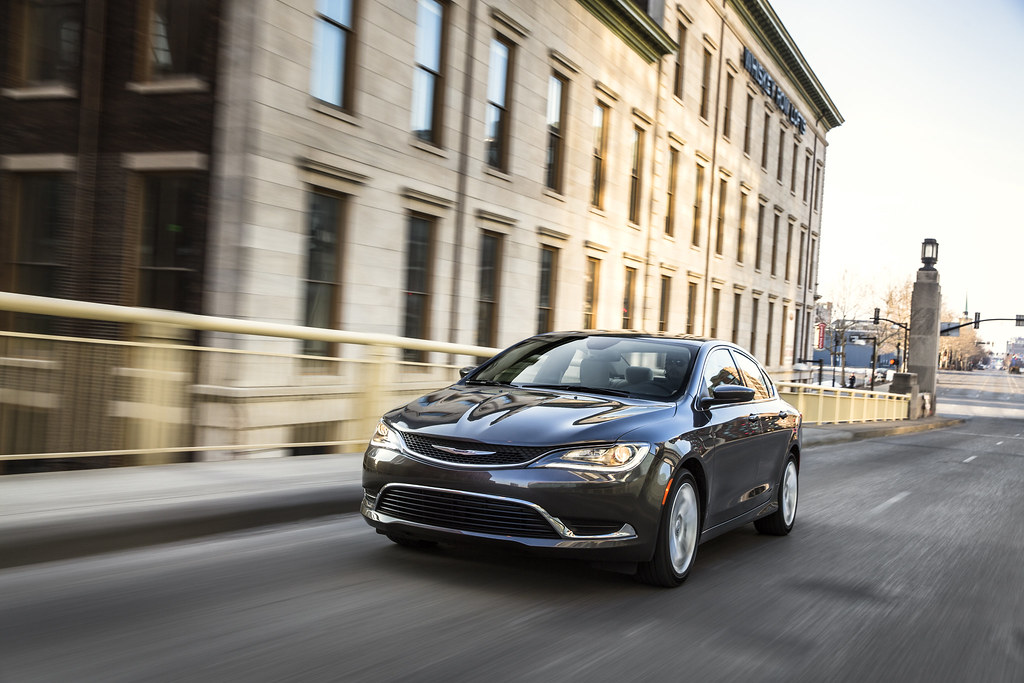
7. **Chrysler 200**Manufactured from 2011 to 2017, the Chrysler 200 quickly accumulated a reputation for having a multitude of reliability issues, making it another prime contender for our list of regretted purchases. While its styling might have had some initial appeal, the ownership experience often devolved into a cycle of repairs and frustration, particularly for those who bought into its later model years.
Owners of the 2015, 2016, and 2017 models found the 9-speed automatic transmission to be especially problematic. This wasn’t just a minor inconvenience; it was a significant flaw that led to a host of operational issues and, far too often, outright transmission failure. For a modern vehicle, persistent transmission problems are a clear indicator of poor engineering and quality control, shaking owner confidence to its core.
But the transmission was just for starters, as the vehicle also suffered from persistent engine performance problems. Whether it was a lack of power, rough idling, or unexpected stalls, these engine woes only added to the Chrysler 200’s growing list of reliability complaints. For many, the dream of owning a sleek American sedan quickly turned into the harsh reality of frequent dealership visits and escalating repair bills.
Alright, so you’ve seen the first batch of automotive nightmares, those rides that turned dreams into dread. But hold onto your wrench, because we’re not done yet. The road to buyer’s remorse is a long and winding one, and unfortunately, there are more vehicles out there eager to take your hard-earned cash and give you nothing but headaches in return.
We’re diving deeper into seven more automotive disappointments, pulling back the curtain on the persistent problems and unexpected costs that have turned initial excitement into enduring regret for countless drivers. These aren’t just minor inconveniences; we’re talking about the kind of mechanical migraines and financial fiascos that make owners wish for a complete automotive do-over. Let’s face it, sometimes the shiny brochure hides a multitude of sins, and these next vehicles prove it.
Car Model Information: 2015 Chrysler 200 S
Name: Chrysler 200
Manufacturer: Chrysler
Production: 2010–2016
ModelYears: 2011–2017
Assembly: Sterling Heights, Michigan
Class: Mid-size car
Sp: us
Predecessor: Chrysler Sebring
Categories: 2010s cars, All articles with dead external links, All articles with unsourced statements, Articles with dead external links from July 2020, Articles with permanently dead external links
Summary: The Chrysler 200 is a mid-size sedan that was manufactured and marketed by Chrysler from model years 2011 to 2017 across two generations in four-door sedan and two-door convertible (first generation only) body styles.
The 200 nameplate debuted on the 200C, a prototype hybrid vehicle shown at the 2009 North American International Auto Show in Detroit and based on the Chrysler 300. The 200C concept was engineered to accept either traditional gasoline, hybrid or full-electric powertrains.
Get more information about: Chrysler 200
Buying a high-performing used car >>>
Brand: Chrysler Model: 200
Price: $7,200 Mileage: 122,275 mi.
Read more about: 14 Classic Rides That Boomers Loved But Millennials and Gen Z Just Can’t Stand: Unpacking Why These Iconic Cars Fail to Appeal Now
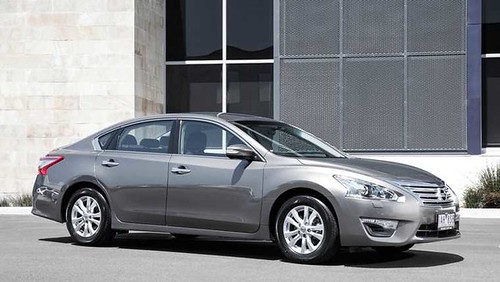
8. **Nissan Altima**You’d think a mainstream sedan like the Nissan Altima would be a safe bet, a reliable workhorse for daily commutes. But for far too many owners, the Altima has become another glaring example of how a seemingly sensible purchase can spiral into a money pit. It’s a car that, much like its Sentra sibling, often leaves drivers wondering where it all went wrong, and the answer, more often than not, points directly to a familiar culprit.
The biggest villain in the Altima’s reliability saga is, you guessed it, the continuously variable transmission (CVT). This isn’t just a minor quirk; we’re talking about a transmission known for raising its ugly head with persistent problems, especially in the 2013 to 2019 model years. Owners have reported a litany of issues, from rough and jerky acceleration to outright transmission failure, turning routine drives into white-knuckle experiences and leading to eye-watering repair bills.
But the CVT isn’t the Altima’s only Achilles’ heel. Owners also frequently report issues with the steering, which can feel vague or unresponsive, undermining confidence behind the wheel. On top of that, excessive oil consumption and oil leaks are common complaints, turning routine maintenance into a constant vigil and adding to the overall cost of ownership. It’s a bitter pill to swallow when a car promising efficiency and practicality delivers anything but.
Ultimately, the Nissan Altima stands as a stark reminder that even a popular sedan can harbor deep-seated issues that erode owner satisfaction over time. For those who bought into the Altima’s promise, the reality of constant repairs and questionable reliability has often led to a profound sense of regret, making it a prime candidate for our list of vehicles to avoid like a bad blind date.
Car Model Information: 2015 Nissan Altima 2.5 S
Name: Nissan Altima
Caption: 2024 Nissan Altima SR (L34; US)
Manufacturer: Nissan
Aka: Nissan Bluebird
Production: 1992–present
Class: Compact car
Predecessor: Nissan Bluebird,Nissan Stanza
ModelYears: 1993–present
Categories: 2000s cars, 2010s cars, 2020s cars, All-wheel-drive vehicles, All Wikipedia articles written in American English
Summary: The Nissan Altima is a mid-size car manufactured by Nissan since 1992. It is a continuation of the Nissan Bluebird line, which began in 1955.
The Altima has historically been larger, more powerful, and more luxurious than the Nissan Sentra but less so than the Nissan Maxima. The first through fourth-generation cars were manufactured exclusively in the United States and officially sold in North and South America, along with the Middle East and Australia. For other markets, Nissan sold a related mid-size sedan called the Nissan Teana which was between the Altima and Maxima in terms of size. In 2013, the Teana became a rebadged version of the fifth-generation Altima.
The name “Altima” was originally applied to a top trim line of the Nissan Leopard for the Japanese market in 1986, and then to the Nissan Laurel Altima mid-size car sold in Central America and the Caribbean before 1992. In 1992, Nissan discontinued the Stanza which was a Nissan Bluebird clone, replacing it with the US-built Altima, while remaining a compact car. The first Altima was produced in June 1992, as a 1993 model. All Altima models for the North American market were built in Smyrna, Tennessee, until June 2004, when Nissan’s Canton, Mississippi plant also began producing the model to meet high demand.
Get more information about: Nissan Altima
Buying a high-performing used car >>>
Brand: Nissan Model: Altima
Price: $8,235 Mileage: 117,517 mi.
Read more about: Buyer’s Remorse on Wheels: 9 Vehicles Owners Wish They Never Drove Off the Lot
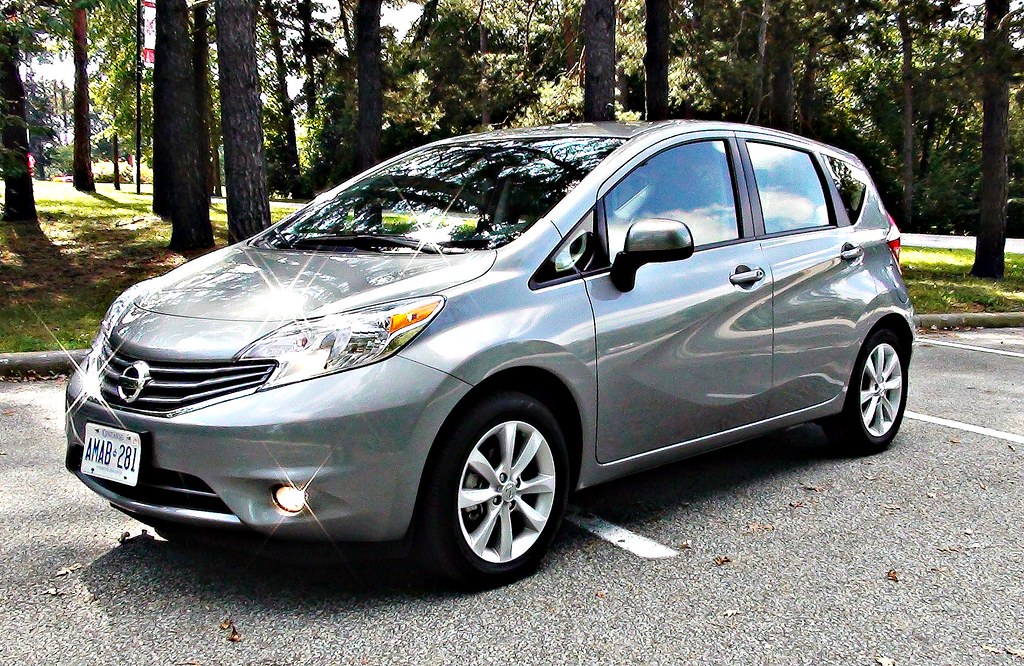
9. **Nissan Versa Note**On the surface, the Nissan Versa Note seems like an unbeatable deal: a super-cheap small hatchback that promises affordability and practicality. And who doesn’t love a bargain? However, as many disillusioned owners have discovered, that low price tag often mirrors the equally low quality level of the vehicle, transforming an initial smart purchase into a long-term regret. This is the automotive equivalent of getting what you paid for, in the worst possible way.
Just like its Nissan brethren, the Versa Note’s continuously variable transmission (CVT) is a massive source of frustration. This transmission has plagued owners to no end, proving unreliable and prone to the same issues of jerky operation and premature failure that have become a signature of Nissan’s less-than-stellar CVT implementations. It’s a fundamental component that simply doesn’t inspire confidence, leaving drivers wary of every shift.
Adding insult to injury, the Versa Note also suffers from what can only be described as anemic acceleration. Its 1.6-liter 4-cylinder engine simply doesn’t pack enough punch, making merging onto highways or accelerating from a stop a surprisingly stressful affair. This lack of power, combined with the problematic transmission, makes for a driving experience that’s far from enjoyable, even for a budget-friendly car.
When you combine a notoriously unreliable transmission with an engine that struggles to get out of its own way, you end up with a vehicle that quickly wears out its welcome. The Nissan Versa Note, despite its initial appeal to the wallet, quickly reveals itself as a compromise that most owners wish they had never made, proving that sometimes, saving a few bucks upfront can cost you a lot more down the road.
Car Model Information: 2017 Chrysler Pacifica Touring-L
Categories: All set index articles, Articles with short description, CS1 Mexican Spanish-language sources (es-mx), CS1 Portuguese-language sources (pt), CS1 Spanish-language sources (es)
Summary: Nissan Versa is an automobile nameplate used by the Japanese manufacturer Nissan in the Americas for the following models:
According to a Nissan press release in 2008, “versa” is short for “versatile space” meant to imply the spaciousness of the interior and configurable cargo arrangements. The Versa is one of the few remaining subcompact cars left on sale in the North American market, with most automakers dropping small cars from their lineups to focus on crossovers and SUVs.
Get more information about: Nissan Versa
Buying a high-performing used car >>>
Brand: Nissan Model: Versa Note
Price: $12,475 Mileage: 127,395 mi.
Read more about: Beyond the Screen: Uncovering the Fates of the Most Iconic TV and Movie Cars Ever
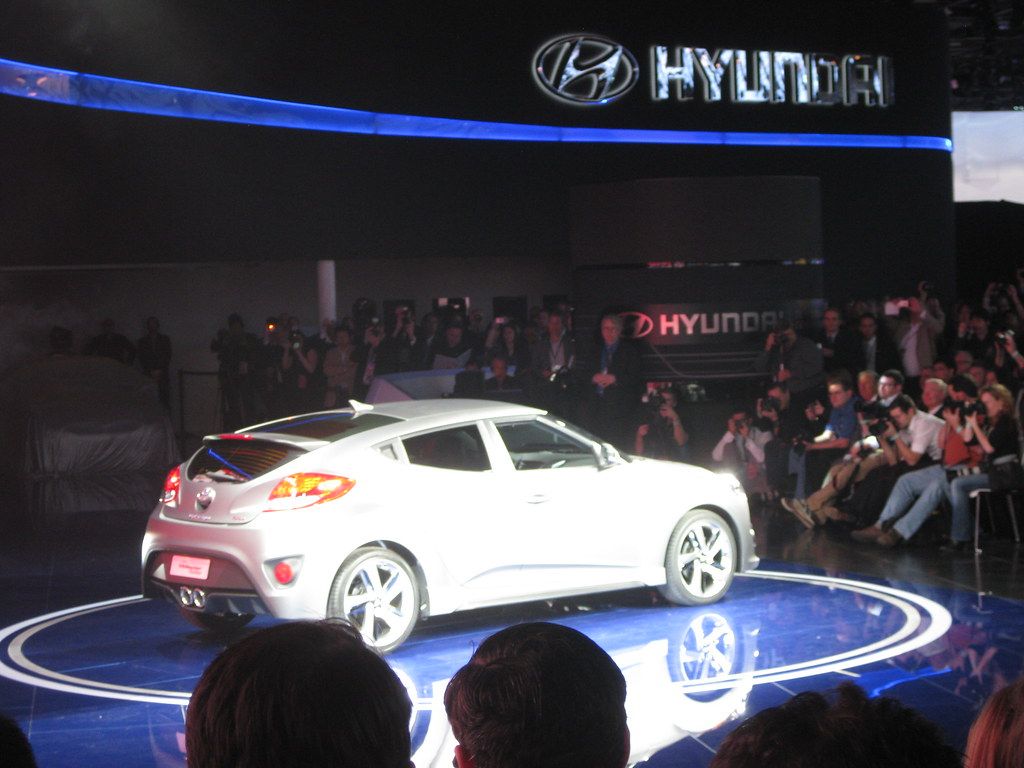
10. **Hyundai Veloster**The Hyundai Veloster arrived on the scene with a refreshing burst of distinctive styling, a cool three-door layout, and the promise of responsive handling. It looked the part of a fun, quirky, and engaging compact car, turning heads and appealing to those who dared to be different. Yet, beneath that undeniably cool facade lay a host of problems that, for many owners, became impossible to ignore, dulling its shine considerably.
The most significant headaches for Veloster owners often revolve around engine issues, which have unfortunately been known to lead to catastrophic failure in some cases. This isn’t just a minor performance hiccup; it’s a major mechanical flaw that can completely sideline the vehicle and inflict substantial financial pain. When the core of your car is unreliable, all the distinctive styling in the world can’t make up for it.
Then there’s the dual-clutch transmission, another component that seemed promising on paper but often failed to deliver in practice. Owners reported frustrating issues like delayed acceleration, noticeable slipping between gears, and unsettling jerky shifts. These transmission woes detract significantly from the “responsive handling” that initially drew buyers in, making the driving experience far less enjoyable and much more unpredictable.
As if engine and transmission problems weren’t enough, the Hyundai Veloster also suffered from a range of suspension and steering issues. These contribute to an overall sense of a vehicle that wasn’t as refined or reliable as its looks suggested. For many who fell for its unique charm, the Veloster ultimately became a source of deep regret, proving that sometimes, bold styling can’t mask fundamental mechanical shortcomings.
Car Model Information: 2012 Hyundai Veloster Base
Name: Hyundai Veloster
Manufacturer: Hyundai Motor Company
Production: 2011–2022
Class: Sport compact car
Layout: Front-engine, front-wheel-drive layout
BodyStyle: hatchback
Predecessor: Hyundai Tiburon
ModelYears: 2012–2022
Assembly: Ulsan
Categories: All Wikipedia articles in need of updating, All articles with unsourced statements, Articles containing Korean-language text, Articles with short description, Articles with unsourced statements from May 2018
Summary: The Hyundai Veloster (Korean: 현대 벨로스터, romanized: Hyeondae Belloseuteo) is a compact car first produced in 2011 by Hyundai, with sales beginning in South Korea on March 10, 2011, and in Canada and the United States since the fall of 2011. In South Korea, it was marketed under Hyundai’s ‘Premium Youth Lab’. It was unveiled on January 10, 2011, at the Detroit Auto Show, and fills the void left when Hyundai discontinued the Hyundai Tiburon after the 2008 model year.
The car differs from most other hatchbacks with its asymmetrical door configuration, featuring one large door on the driver side and two smaller doors on the passenger side. This configuration is more common on commercial vehicles and minivans.
Get more information about: Hyundai Veloster
Buying a high-performing used car >>>
Brand: Hyundai Model: Veloster
Price: $7,950 Mileage: 83,462 mi.
Read more about: Is Your Ride a Ticking Time Bomb? 14 Popular Cars That Can Seriously Let You Down After 100K Miles
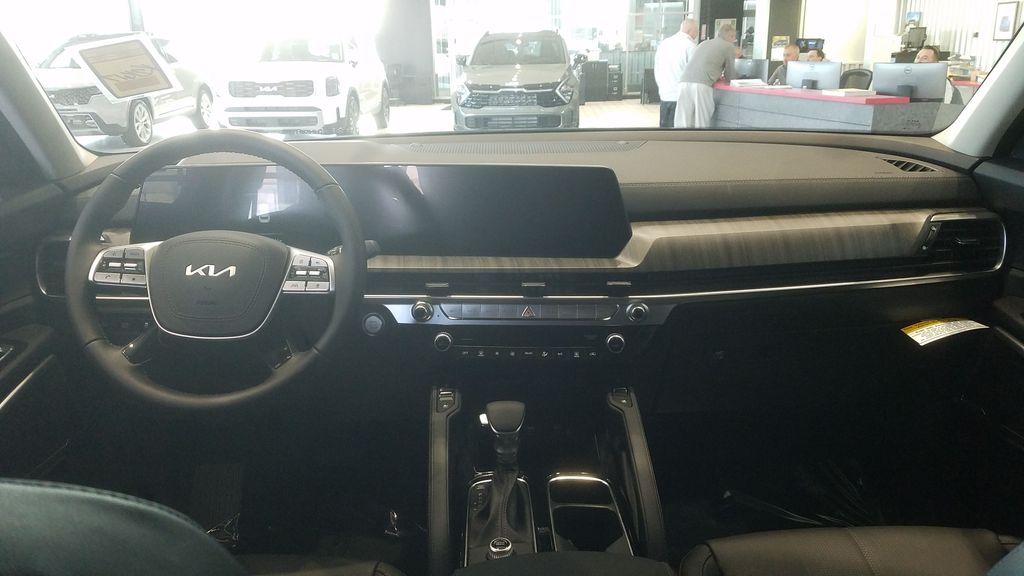
11. **Kia Rio**The Kia Rio has carved out a niche for itself by being known for its affordability and efficiency, making it an attractive option for budget-conscious buyers and those seeking economical transport. However, for a significant number of its owners, this perceived value quickly evaporated as the car revealed a less flattering side. Many Rio drivers have come to share a common sentiment: a distinct case of buyer’s remorse.
While the low entry price is appealing, the Kia Rio is just as well known for a rather unfortunate string of engine issues. Owners frequently report problems such as rough idling, where the engine struggles to maintain a smooth, consistent rhythm, and frustrating misfires. These issues are often traced back to faults with key components like spark plugs or ignition coils, leading to unexpected repair costs for a vehicle bought for its frugality.
Beyond the mechanical heartaches, the interior quality of the Kia Rio has also been a consistent point of contention. Owners frequently complain about the cheap interior materials and overall comfort issues, which can make daily driving less pleasant. What starts as a practical, no-frills choice often ends up feeling like a compromise too far, particularly when the costs of ownership begin to mount.
Ultimately, the Kia Rio serves as a cautionary tale: while affordability is a powerful draw, it shouldn’t come at the expense of fundamental reliability and a reasonable level of comfort. For those who experienced its engine woes and underwhelming cabin, the dream of an efficient, inexpensive ride quickly soured, leading them to wish they had looked for a better balance of price and long-term satisfaction.
Car Model Information: 2023 Kia Rio S
Name: Kia Rio
Caption: Fourth generation Kia Rio
Manufacturer: Kia
Aka: Kia Pride (2005–2017),Kia K2 (China; 2011–2020)
Production: November 1999 – December 2023
ModelYears: 2001–2023 (North America)
BodyStyle: hatchback
Class: Subcompact car
Layout: Front-engine, front-wheel-drive layout
Predecessor: Kia Pride,Kia Avella
Successor: Kia K3 (BL7)
Categories: 2000s cars, 2010s cars, Articles containing Korean-language text, Articles with short description, CS1 Croatian-language sources (hr)
Summary: The Kia Rio (Korean: 기아 리오) is a subcompact car manufactured by Kia from 1999 to 2023. Body styles have included a three and five-door hatchback and four-door sedan, equipped with inline-four gasoline and diesel engines, and front-wheel drive.
The Rio replaced the first generation Pride—a rebadged version of the Ford Festiva—and the Avella, a subcompact sold as a Ford in some markets. A second generation was introduced in 2005 in Europe and in 2006 in North America, sharing its platform with the Hyundai Accent, a subcompact manufactured by its sister Hyundai Motor Company in South Korea.
In August 2023, the K3 was introduced as its successor in several markets such as Mexico and the GCC countries.
Get more information about: Kia Rio
Buying a high-performing used car >>>
Brand: Kia Model: Rio
Price: $17,218 Mileage: 22,509 mi.
Read more about: From Humble Beginnings to Electric Dreams: A Deep Dive into Elon Musk’s Electrifying and Eclectic Garage
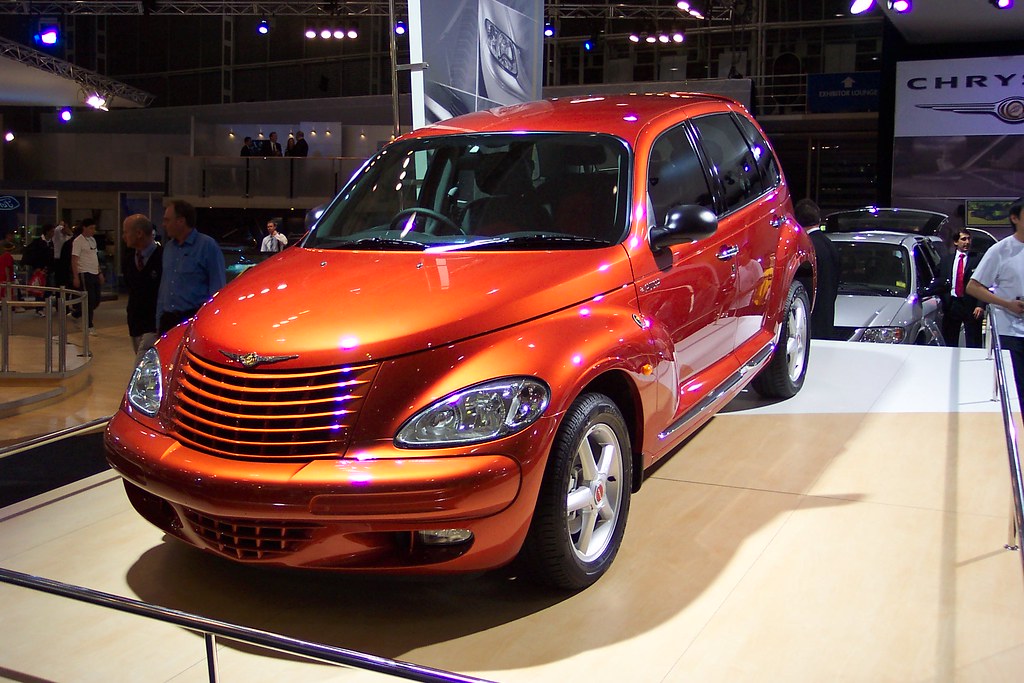
12. **Chrysler PT Cruiser**Ah, the Chrysler PT Cruiser. Where do we even begin with this one? It’s a compact car that sported a retro style so distinctive, it practically demanded a reaction: people either passionately loved it or loved to hate it. But, as legions of former owners discovered, the polarizing looks were far from the only things that were, shall we say, *wrong* with the vehicle. Its issues extended well beyond mere aesthetics.
Underneath that polarizing sheet metal, the PT Cruiser harbored engine issues galore, turning what should be a straightforward driving experience into a perpetual gamble. Owners reported a terrifying array of problems, ranging from unpredictable stalling at inconvenient moments to persistent rough idling, which sounds about as good as it felt. Overheating was also a common complaint, as was the dreaded head gasket failure, often signaling a death knell for the engine.
And the mechanical misery didn’t stop there. The PT Cruiser also suffered from significant transmission problems, adding another layer of unreliability to an already shaky foundation. Electrical issues were also frequent, leading to everything from minor annoyances with accessories to major operational failures that could leave drivers stranded. It seemed like every system had a potential point of failure waiting to strike.
When you tally up the laundry list of engine, transmission, and electrical problems, it’s no surprise that a vast number of PT Cruiser owners ended up regretting their buying decision profoundly. That unique retro style quickly lost its charm when faced with constant repair bills and the nagging uncertainty of whether the car would even start. It’s a prime example of a vehicle whose character couldn’t compensate for its fundamental flaws.
Car Model Information: 2017 Chrysler Pacifica Touring-L
Name: Chrysler PT Cruiser
Manufacturer: Chrysler
ModelCode: PT,PG
Production: 2000–2010
ModelYears: 2001–2010
Assembly: Toluca, Mexico State
Designer: Bryan Nesbitt
Class: Compact car
BodyStyle: convertible
Platform: Chrysler PT platform
Related: Dodge SRT4,Dodge Neon
Predecessor: Dodge Neon
Successor: Lancia Delta#Third generation
Layout: Front-engine, front-wheel-drive layout
Engine: ubl
Transmission: Ultradrive#40TE
Wheelbase: 103 in
Abbr: on
Length: 168.8 in
Width: 67.1 in
Height: 63 in
Weight: 3123 lb
Categories: 2010s cars, All articles with unsourced statements, Articles with short description, Articles with unsourced statements from March 2018, Cars discontinued in 2010
Summary: The Chrysler PT Cruiser is a compact car that was built by the American company Chrysler from 2001 until 2010. Introduced as a five-door hatchback wagon, a two-door convertible variant was also made from 2005 until 2008.
Originally planned as a Plymouth model, the PT Cruiser was ultimately marketed as a Chrysler when Plymouth was discontinued. Intended to invoke 1930s aesthetics, the exterior of the PT Cruiser was designed by Bryan Nesbitt. The model received an intermediate facelift for the 2006 model year. Interior packaging was noted for its high roof, high h-point seating, and flexible cargo and passenger configurations enabled by a multi-level rear cargo shelf and rear seats a user could fold, tumble, or remove.
The PT Cruiser was produced in Mexico and Austria at the Toluca Car Assembly and Eurostar Automobilwerk factories respectively. By the end of production in July 2010, worldwide production had reached 1.35 million.
In its nameplate, PT stands for “Personal Transport” or “Personal Transportation”. PT was the PT Cruiser’s product code for the Mexican-made units.
Get more information about: Chrysler PT Cruiser
Buying a high-performing used car >>>
Brand: Chrysler Model: PT Cruiser
Price: $12,475 Mileage: 127,395 mi.
Read more about: 14 Classic Rides That Boomers Loved But Millennials and Gen Z Just Can’t Stand: Unpacking Why These Iconic Cars Fail to Appeal Now
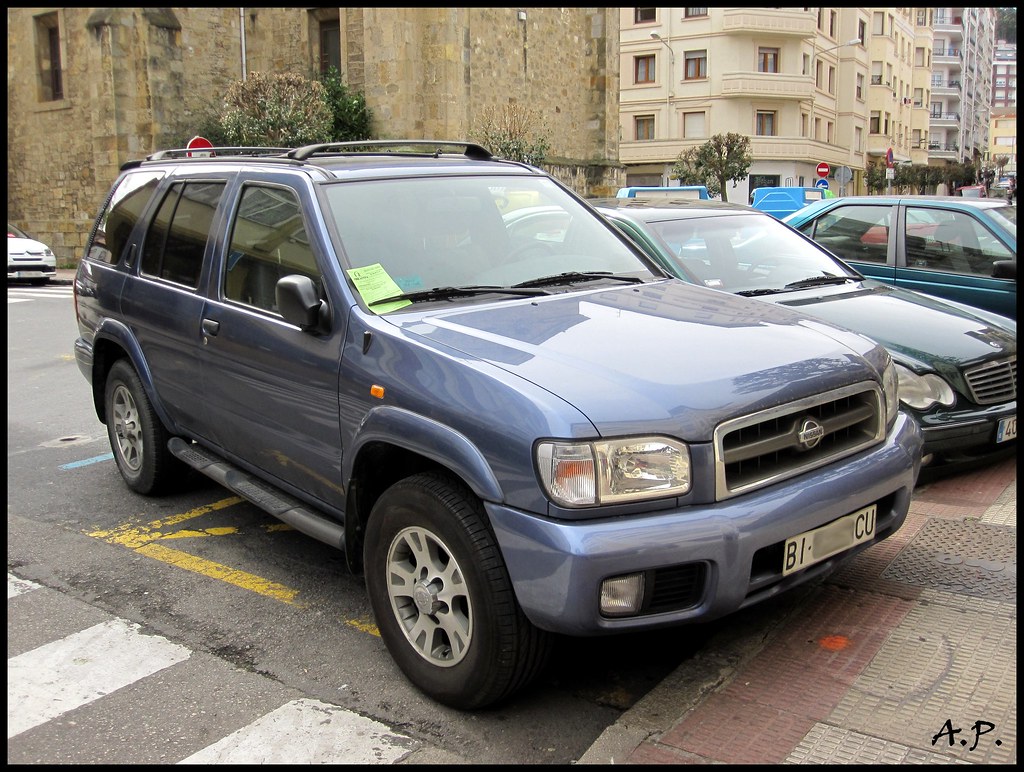
13. **Nissan Pathfinder**The Nissan Pathfinder is a popular SUV, often chosen for its family-friendly practicality and robust appearance. Yet, for a significant segment of its ownership base, the journey with the Pathfinder has been anything but smooth, culminating in a pervasive sense of buyer’s remorse. It’s another vehicle that, despite its broad appeal, has a notorious secret lurking under the hood.
The primary issue of contention for many Pathfinder owners, echoing a recurring theme in Nissan’s lineup, is its continuously variable transmission (CVT). Yes, that transmission again. It’s become a symbol of frustration for countless drivers, with reports of rough shifting, unsettling shuddering during acceleration, and even instances of overheating. These aren’t minor gripes; they directly impact the driving experience and the perceived reliability of a vehicle meant for long-term family use.
And for the ultimate slap in the face, some Nissan Pathfinder owners found themselves facing the expensive and inconvenient reality of having to completely replace the transmission. This kind of catastrophic failure is a heavy blow to any car owner, especially when it comes to an SUV often relied upon for daily duties and family trips. The cost and downtime alone are enough to send anyone into a spiral of regret.
Beyond the transmission woes, the Pathfinder has also been plagued by engine issues and fuel system problems, further compounding the frustration for owners. When an SUV designed for adventure and reliability constantly sends you to the mechanic, it’s easy to see why so many Pathfinder buyers would wish they could turn back time and choose a different path.
Car Model Information: 2023 Nissan Pathfinder SL
Name: Nissan Pathfinder
Caption: 2022 Nissan Pathfinder Platinum 4WD (R53, US)
Manufacturer: Nissan
Production: 1985–present
ModelYears: unbulleted list
Layout: unbulleted list
Class: unbulleted list
Chassis: unbulleted list
Predecessor: unbulleted list
Successor: unbulleted list
Categories: 1990s cars, 2000s cars, 2010s cars, 2020s cars, All-wheel-drive vehicles
Summary: The Nissan Pathfinder is a range of sport utility vehicles manufactured by Nissan since 1985. Until the third-generation model, the Pathfinder is based on Nissan’s compact pickup truck platform which it shares with the Navara/Frontier.
The Pathfinder was marketed as the Nissan Terrano (Japanese: 日産・テラノ, Hepburn: Nissan Terano) outside North America. Beginning in 2004, the vehicles were marketed globally as the Pathfinder.
In 2012, the R52 series Pathfinder was released as a three-row crossover SUV based on the unibody Nissan D platform, moving away from the body-on-frame chassis format. The role of a mid-size body-on-frame SUV in Nissan’s global lineup was passed to the Terra/X-Terra, which was released in 2018 and based on the D23 series Navara.
Get more information about: Nissan Pathfinder
Buying a high-performing used car >>>
Brand: Nissan Model: Pathfinder
Price: $33,900 Mileage: 18,055 mi.
Read more about: 11 SUVs That Promise Adventure But Deliver Owners Immediate Regret
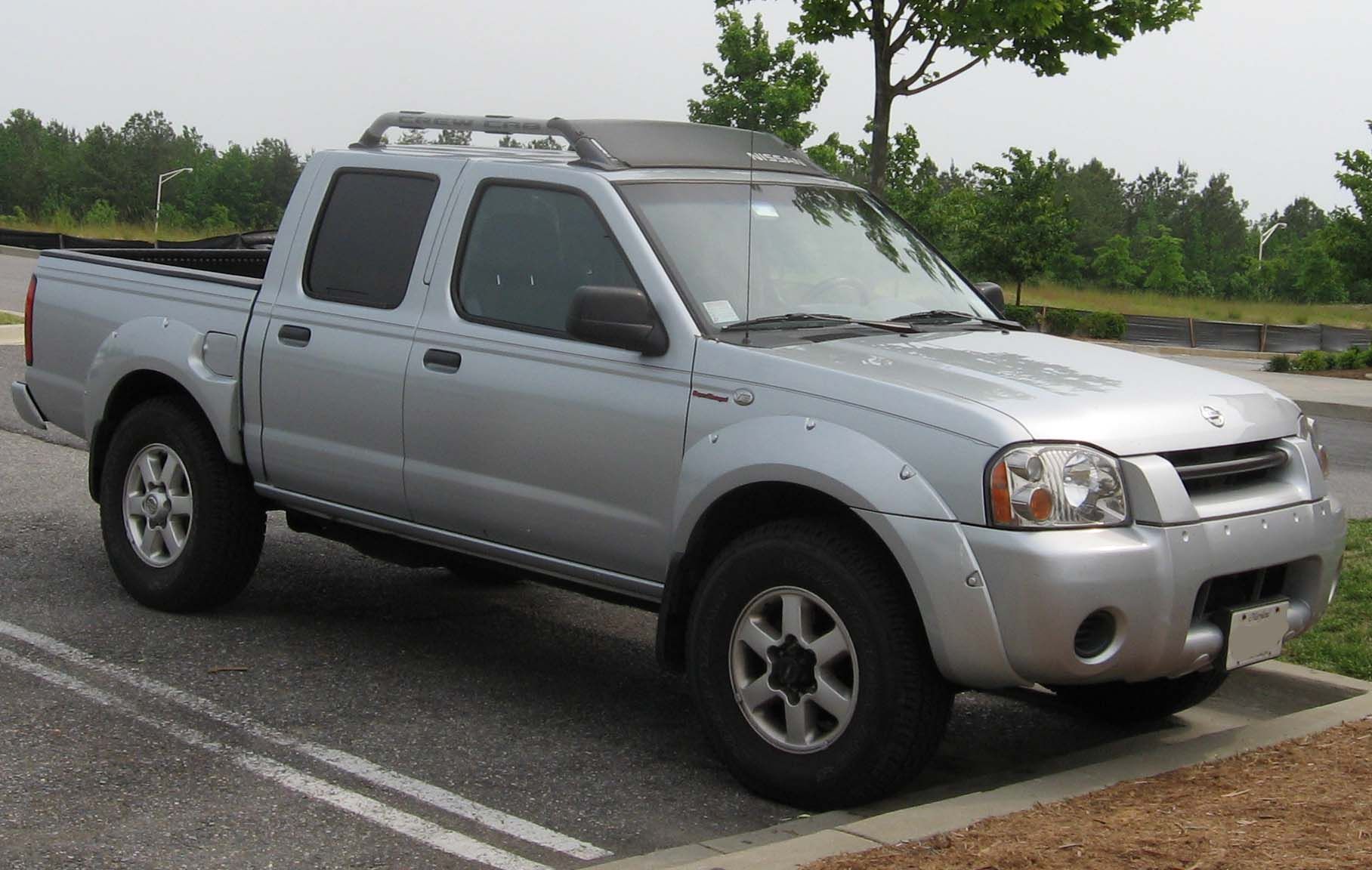
14. **Nissan Frontier**For those who venture into the mid-size pickup truck segment, the Nissan Frontier often presents itself as a rugged and capable option. However, for many owners, particularly those who invested in the 2005 to 2010 model years, the Frontier has delivered far more headaches than hauling prowess. It’s the kind of truck that has left owners shaking their heads and, perhaps, even pounding the dashboard with their fists in sheer frustration.
The transmission issues in these specific Frontier model years are legendary, and not in a good way. The root cause is a particularly egregious design flaw: the radiator leaks coolant directly into the transmissions. Yes, you read that right—engine coolant mixing with transmission fluid. The result of this catastrophic cross-contamination is a nightmare of slipping gears, herky-jerky shifting that feels like the truck is fighting itself, and ultimately, complete transmission failure.
This isn’t just a minor repair; it’s a foundational flaw that can quickly render a truck unusable and incur massive repair costs, often requiring a full transmission replacement. For a vehicle designed to be a dependable workhorse, such a fundamental design oversight is simply unforgivable and a profound source of buyer’s remorse, turning tough tasks into terrifying gambles.
As if the transmission wasn’t enough, Frontier owners also grappled with persistent engine problems and timing chain issues, adding further layers of unreliability and expense to the ownership experience. When a truck, meant to be the epitome of dependability, consistently lets you down on multiple fronts, it’s a clear signal that it belongs on the “never again” list for any owner who values peace of mind and a functioning vehicle.
Car Model Information: 2014 Nissan Frontier S
Categories: All set index articles, Articles with short description, Nissan vehicles, Set index articles on cars, Short description is different from Wikidata
Summary: The Nissan Frontier is a nameplate used on three different pickup truck models by Nissan:
Nissan Frontier (international), an alternative nameplate for the NP300/Navara on some markets
Nissan Frontier (North America), a rebadged NP300/Navara from 1997 to 2021, then became a separate model since 2021
Nissan Frontier Pro, a rebadged Dongfeng Z9 PHEV that will be available from 2025.
Get more information about: Nissan Frontier
Buying a high-performing used car >>>
Brand: Nissan Model: Frontier
Price: $13,435 Mileage: 131,197 mi.
Read more about: 11 SUVs That Promise Adventure But Deliver Owners Immediate Regret
So, there you have it: fourteen vehicles that have left a trail of regret in their wake. Sometimes life is about learning from other people’s mistakes so you don’t have to repeat them. That’s certainly the case with car ownership. These cars are worth skipping unless you want to roll the dice and hope your experience is miraculously the opposite of what so many current and former owners have endured. Do your homework, listen to the real-world experiences, and save yourself from the heartbreak of an automotive nightmare. Your wallet, and your sanity, will thank you.



